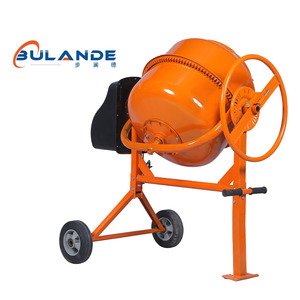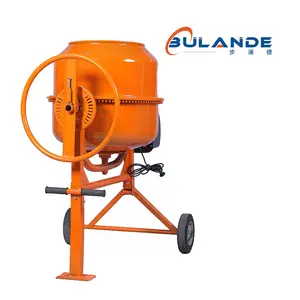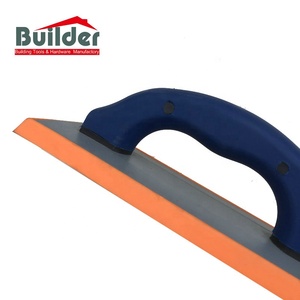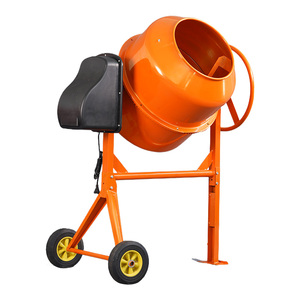
All categories
Featured selections
Trade Assurance
Buyer Central
Help Center
Get the app
Become a supplier

(2614 products available)




















































The term ''grout mixer'' pertains to a wide range of machines used in construction to mix water, cement, sand, and other additives to make a fluid compound. Grout has two main purposes when it comes to construction. One is to fill in any gaps or voids, while the other application involves strengthening the structural integrity of the system in place. As a fluid mixture, it is perfect for bolstering the foundations of buildings, paving, and other infrastructures. The need for a consistent and uniform mixture gives rise to the demand for a grout **equipment mixer**. These mixers vary depending on their application, technology, capacity, portability, and other defining characteristics.
Application-based classification
There are several types of grout mixes available, depending on their application:
Functional Grout Mixes: These are generally niche-specific and tailored for a specific function, such as chemical-resistant, high-strength, low-shrink, or anti-freeze grout mixtures.
Structural Grout Mixes: These are designed for load-bearing or structural applications, including high-strength and anti-freeze grout mixes.
Technology-based classification
Chemical Injection Grouts: These are based on chemical technologies, such as epoxy resins, phenolic resins, polyester resins, urethane resins, etc. These are used in waterproofing, soil stabilization, leak remediation, foundation repair, and filling voids in concrete.
Epoxy Grout: This type of grout has a mixture of epoxide resins, hardeners, and pigments. It is more durable, stain-resistant, and non-porous than cement grout, making it ideal for high-moisture areas and offering chemical resistance and ease of maintenance.
Polyurethane Grout: Also known as flexible or elastic grout, this features a polymer-based formulation. This grout is highly adaptable and can accommodate movements in tile, preventing cracking. It is also water-resistant, making it suitable for exterior applications.
Capacity-based classification
Batch Mixers: These grout mixers are used to produce small to medium amounts of grout and offer flexibility for different grout mixtures. They have a simple operating system and efficient cleaning processes. However, they may have longer mixing times and be less suitable for large-scale projects compared to continuous mixers.
Continuous Mixers: Continuous grout mixers produce large quantities of grout and are more suitable for large-scale projects. They offer faster mixing times and maintain consistent grout quality. However, they have a steeper learning curve for operating and cleaning compared to batch mixers.
A grout mixer prepares and mixes grout that civil engineering and construction professionals will use for filling gaps and cracks. This machine will blend all materials thoroughly to ensure the highest quality of grout. Quality assurance is vital, as a well-mixed product with few flaws is essential for achieving strong and long-lasting foundations and structural integrity.
The first step in using the grout equipment mixer is to gather all materials to use the machine effectively. Collect the following: the mixer pump, mixing bucket, mixing paddle, feed hose, power source, water, grout powder, reinforcement location, area to fill, and specifications as instructed by your manufacturer.
The process of mixing grout can be done quickly and easily using the following simple steps:
After use, remember to clean the grout equipment mixer. It is essential to maintain and inspect the machine regularly, as this ensures good operation and prolongs the machine's life. Consider the following cleaning tips:
Whether buying grout mixers for sale or for private use, it is imperative to research the various kinds of grout mixer equipment available and their applications. When selecting a grout mixer for purchase, buyers should be equipped with knowledge about the grout blending machine they want to buy.
Determine grout type & consistency:
Before embarking on a buying journey, it is essential for the buyer to understand the type of grout they will mix and the desired consistency they want to achieve. Selecting a grout mixer primarily depends on the kind of grout to be mixed, ranging from cement-based grouts to epoxy or urethane grouts. Additionally, different grout mixers have various capacities for mixing batches. Therefore, buyers should consider the volume of grout they need to mix and select a grout mixer whose capacity suits their needs to avoid repeated mixing, which can be inefficient.
Assess project requirements:
The buyer should consider the project at hand and its specific requirements. The kind of grout mixer to go for will depend on whether the floor is industrial, commercial, or residential. The buyer should also consider the time constraints and decide whether a fast-mixing grout is needed or not. Some projects require the use of specific grout mixer equipment. For instance, the use of epoxy or urethane requires the use of epoxy grout mixers. Buyers should familiarize themselves with such specifications before purchasing the grout mixing machine.
Consider features and specifications:
Buyers are presented with many options regarding the kinds and features of grout mixers. Buyers can opt for rental grout mixers depending on the project specifications and requirements. When considering the features and specifications of a grout mixer, buyers should have a desire to achieve uniformity and consistency in the materials mixed. Such ideal outcomes can only be achieved with suitable mixing power and speed.
Ease of use and cleaning:
Grout mixer buying can be an easy task if the buyer chooses to buy mixers with easy-to-use controls and clear instructions. It is advisable to settle on a model that provides detailed operator manuals and user controls. Ease of cleaning is also an important consideration. Grout is a messy material, and the buyer wants to ensure that the grout mixer will be easy to clean and maintain after use.
Budget considerations:
When embarking on the grout mixer buying journey, determine the budget and the kind of mixer to go for. Different kinds of mashers have different prices. The buyer may choose to rent if they can’t afford to buy a mixer. The location of the supplier is also essential when determining the shipping cost and distance. If the supplier is near or within reasonable distance, the buying cost will be lower in terms of shipping.
Q: What are some features of a high-performance grout mixer?
A: Powerful mixing, product customization, user-friendly operation, and high productivity are some features of a high-performance grout mixer.
Q: Can buyers get a customized grout mixer?
A: Yes, buyers can get customized grout mixer equipment to suit their specific needs and preferences.
Q: How can one improve the durability of a grout mixer?
A: To improve durability, opt for high-quality materials, ensure proper maintenance, and choose a reputable brand.
Q: Are there portable grout mixers?
A: Yes, there are portable grout mixers. They are lightweight and designed for easy transportation and versatility in different applications.